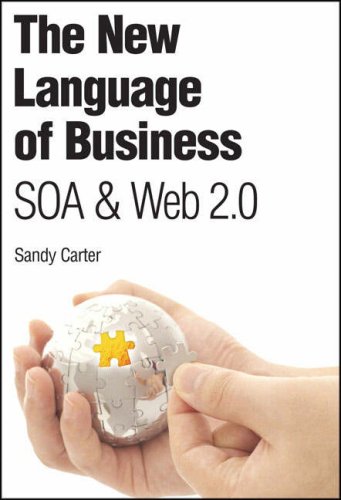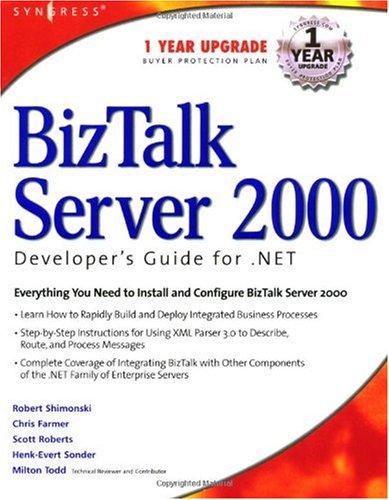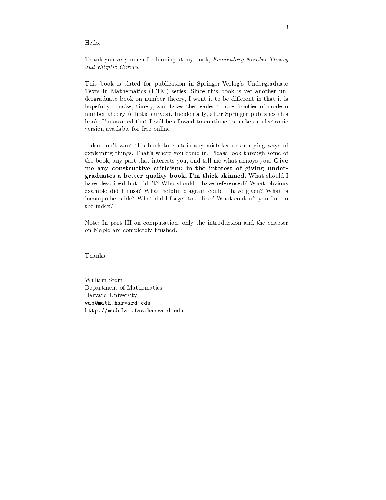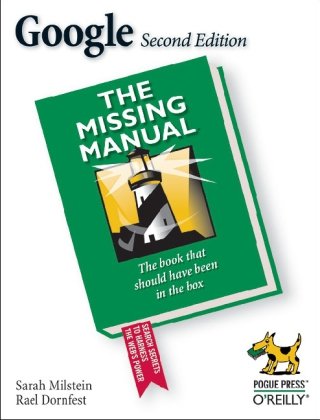Sandy Carter9780131956544, 013195654X
Neil Ward-Dutton, Research Director, Macehiter Ward-Dutton
It’s easy to pay lip service to the concept of business/IT alignment, but in The New Language of Business, Sandy Carter walks the walk. Few treatments of SOA ground this admittedly difficult topic in the world of business as thoroughly as Sandy has here. I’d recommend this book to any business reader who wants to leverage IT to make their business more agile and innovative, and to any technical reader who wishes to understand how to place SOA in the business context where it belongs.
Jason Bloomberg, Senior Analyst and Principal, ZapThink LLC
A very valuable read. In today’s globally connected marketplace profitable growth requires business flexibility and continuous innovation, both of which are increasingly proving to be impossible without business modularity and the new table-stakes technology SOA.
Ron Williams, Professor, Kenan-Flagler Business School, University of North Carolina at Chapel Hill
Sandy has provided a pragmatic and holistic perspective on Service Oriented Architectures. She adds credibility by sharing IBM’s in-depth customer research as well as case studies to support the findings. The book is a strong source book for those wanting to get started with SOA.
Judith Hurwitz, President & CEO, Hurwitz & Associates, coauthor, Service Oriented Architectures for Dummies
Few people have thought as long or as hard about SOA as Sandy Carter. This book embodies her invaluable work and the work of many at IBM to research, define, deploy and make SOA happen. Useful not just from a SOA perspective, but also as a concise articulation of the contemporary concepts fundamental to understanding where business and IT are heading.
Service Oriented Architecture For Dummies, Senior Analyst, Aberdeen Group
The New Language of Business: SOA & Web 2.0 is based on the collective feedback from industry leaders at organizations of all sizes, in more than 50 countries, who shared their views, experiences, and challenges of aligning technology with business goals.
From the foreword by Steve Mills, Senior Vice President and Group Executive, IBM Software Group
There is now a direct, provable link between an organization’s flexibility and business performance. To optimize flexibility, companies must achieve unprecedented levels of integration and automation of key processes and infrastructure, both internally and externally. At the same time, they must learn to manage their processes far more dynamically and responsively.
They must become flex-pon-sive*.
Until recently, technology stood in the way of achieving these goals. Thanks to the emergence of service oriented architecture (SOA), Web 2.0, and open standards, technology now enables companies to achieve those goals. In The New Language of Business, one of IBM’s top SOA strategist demonstrates how business leaders can use innovations in technology to drive dramatic process improvements and support accelerating change.
Sandy Carter shows how to deconstruct your business into a “componentized” business model, then support that model with linked, repeatable IT services that can adapt quickly, easily, and economically. These techniques will help both IT professionals and business leaders reach new levels of operational excellence to deliver the market-focused innovations that matter most.
Drive competitive advantage through Service Oriented Architecture
Leverage the value of business process components and IT services
Achieve one version of the truth–finally!
Use information as a service to improve business insight and reduce risk
Master SOA governance and the service lifecycle
Manage IT infrastructure for business results, both short-term and long-term
Start fast: choose from three winning approaches
Get quick wins with business process management, collaboration or information
Implement on demand: what works–and what doesn’t
Discover key success factors–and ten critical mistakes to avoid
Create the flex-pon-sive* business!
Learn the secrets of success from industry leaders at organizations of all sizes, from over 50 countries–and why SOA was unanimously chosen as the best way to address their challenges
•Leverage the IBM roadmap for SOA and Web 2.0 deployment, plus proven best practices learned in the field
•Understand what it means to be flex-pon-sive*–and how your organization can get there
In The New Language of Business, senior IBM executive Sandy Carter demonstrates how to leverage SOA, Web 2.0, and related technologies to drive new levels of operational excellence and business innovation.
Writing for executives and business leaders inside and outside IT, Carter explains why flexibility and responsiveness are now even more crucial to success–and why services-based strategies offer the greatest promise for achieving them.
You’ll learn how to organize your business into reusable process components–and support them with cost-effective IT services that adapt quickly and easily to change. Then, using extensive examples–including a detailed case study describing IBM’s own experience–Carter identifies best practices, pitfalls, and practical starting points for success.
Build the flex-pon-sive* business
Flex-pon-sive* companies respond with lightning speed and agility to rapidly changing business needs.
Flex-pon-sive* companies are focused on processes that are enabled for change through IT.
Foreword
Part I: Start at the Beginning–The Business
Chapter 1: The Innovation Imperative
Chapter 2: What Is Flex-pon-sive*?
Chapter 3: Deconstructing Your Business: Component Business Model
Part II: A Flexible Business Requires Flexible IT
Chapter 4: SOA as the DNA of a Flex-pon-sive* and Innovative Company
Chapter 5: SOA Key Concepts
Chapter 6: SOA Governance and Service Lifecycle
Chapter 7: Three Business-Centric SOA Entry Points
Chapter 8: What about Web 2.0 and SOA? Are They Related?
Part III: How to Implement Flex-pon-sive* in Your Business
Chapter 9: The Top 10 Don’ts!
Chapter 10: Case Study: IBM
Chapter 11: Putting It All Together
Glossary
Table of contents :
Prentice.Hall.The.Linux.Programmers.Toolbox.Mar.2007……Page 1
Contents……Page 10
Foreword……Page 14
Acknowledgments……Page 17
About the Author……Page 20
PART I: Start at the Beginning—The Business……Page 22
1 The Innovation Imperative……Page 24
Focus on Growth……Page 25
Focus on Process Is Key……Page 29
Summary……Page 32
What Does Flex-pon-sive* Mean?……Page 34
Business Response: What Does It Take to Be a Winner?……Page 40
Summary……Page 42
3 Deconstructing Your Business: Component Business Model……Page 44
Competing in an Era of Specialization……Page 45
Patterns of Success……Page 57
Leveraging CBM to Deliver Value……Page 58
Summary……Page 60
PART II: A Flexible Business Requires Flexible IT……Page 62
4 SOA as the DNA of a Flex-pon-sive* and Innovative Company……Page 64
What Is Service Oriented Architecture?……Page 65
Competing on Flexibility……Page 72
SOA Connectivity for Flexibility……Page 81
Reuse Through SOA for Flexibility……Page 82
The SOA Reference Architecture……Page 86
Why SOA Projects Succeed and How to Leverage Their Lessons……Page 90
Summary……Page 94
5 SOA Key Concepts……Page 96
Interoperability Standard: Web Services……Page 97
Business Service Registry and Repository……Page 102
Enterprise Service Bus (ESB)……Page 105
Tying It All Together: Services, Connectivity Through Your ESB, and the BSRR……Page 122
The SOA Lifecycle Drives IT Flexibility……Page 123
Summary……Page 124
6 SOA Governance and Service Lifecycle……Page 126
What Is Governance?……Page 127
The Alignment Challenge Made Real……Page 131
Alignment Vision for the Future……Page 132
The SOA Governance Challenge……Page 135
The SOA Governance Link to Service Lifecycle Management……Page 144
Governance and Lifecycle Management Linked Through the Service Registry and Repository……Page 151
How to Get Started……Page 153
Summary……Page 154
7 Three Business-Centric SOA Entry Points……Page 156
Business Process Management as an Entry Point……Page 157
Final Insight into IBM……Page 173
Information as an Entry Point……Page 178
Collaboration as an Entry Point……Page 188
The Bottom Line: The New Language of Business……Page 194
Summary……Page 198
8 What about Web 2.0 and SOA? Are They Related?……Page 200
What Is Web 2.0?……Page 201
Web 2.0 and SOA: Advantage for Flexibility……Page 206
The Web as the Next Platform……Page 211
Business Models Enabled……Page 212
Summary……Page 219
PART III: How to Implement Flex-pon-sive* in Your Business……Page 220
9 The Top 10 Don’ts!……Page 222
1. Don’t Expect Maximum Business Flexibility Without SOA……Page 223
2. Don’t Just Do Technology—It Is a Transformation of the Way You Do Business……Page 224
3. Don’t Throw Everything Out!……Page 226
4. Don’t Bite Off Too-Big Projects……Page 227
5. Don’t Forget to Set Expectations……Page 228
6. Don’t Expect to Do This Without a Culture Modification Through Governance……Page 233
7. Don’t Forget the Right Skills……Page 235
8. Don’t Expect the Flexibility Without Open Standards……Page 237
9. Don’t Do This Alone—Leverage Partners Who Have Experience……Page 238
Summary……Page 241
10 Case Study: IBM……Page 244
The Background……Page 245
The Governance Model……Page 248
The Journey……Page 251
The First Project……Page 252
SOA and Reuse Are Alive……Page 253
Set Expectations……Page 255
Business Impact Metrics……Page 257
The Cultural Change……Page 259
The Right Skills……Page 261
Summary……Page 263
11 Putting It All Together……Page 264
Growth, Business Flexibility, and Innovation Are the Results of a Flex-pon-sive* Company……Page 265
Now, How Do You Convince the Business……Page 267
SOA and Web 2.0 Become the Enablers……Page 269
Learning from Other Companies Is Critical Around the Entry Points……Page 271
Unlock the Business Value Multiplier……Page 288
Governance Is Critical……Page 295
Infrastructure and Management Complete the Picture……Page 298
Summary……Page 300
B……Page 304
E……Page 305
O……Page 306
R……Page 307
S……Page 308
W……Page 310
X……Page 311
B……Page 312
C……Page 313
E……Page 314
G……Page 315
I-J……Page 316
P……Page 317
S……Page 318
X-Y-Z……Page 320







Reviews
There are no reviews yet.